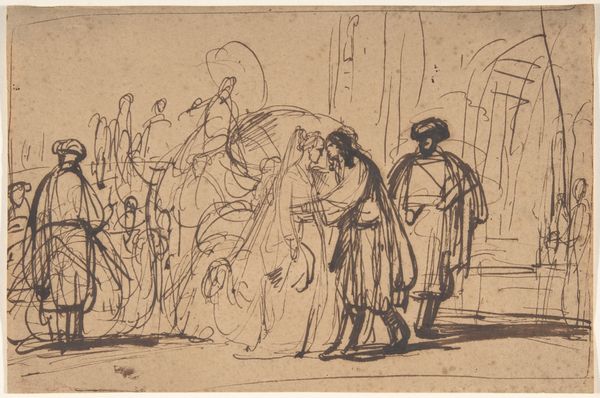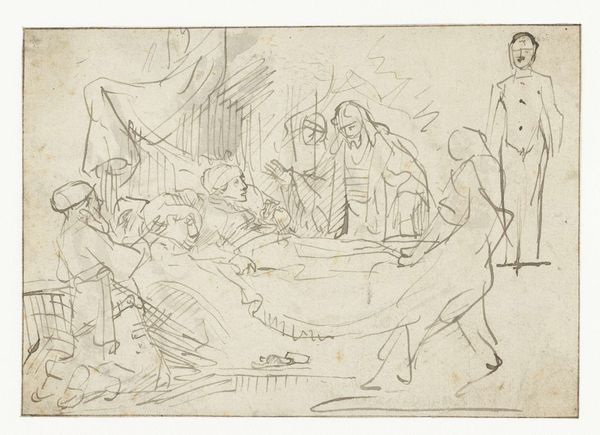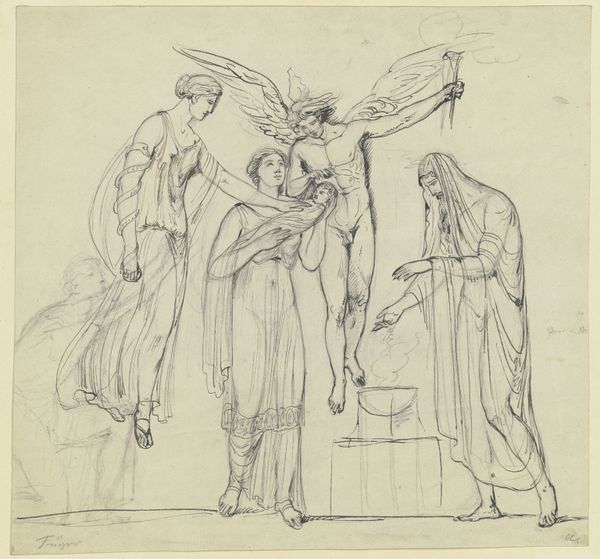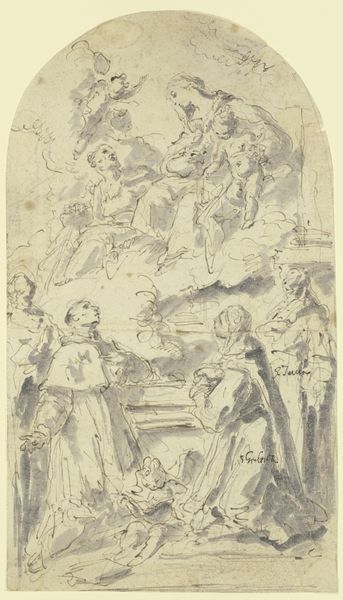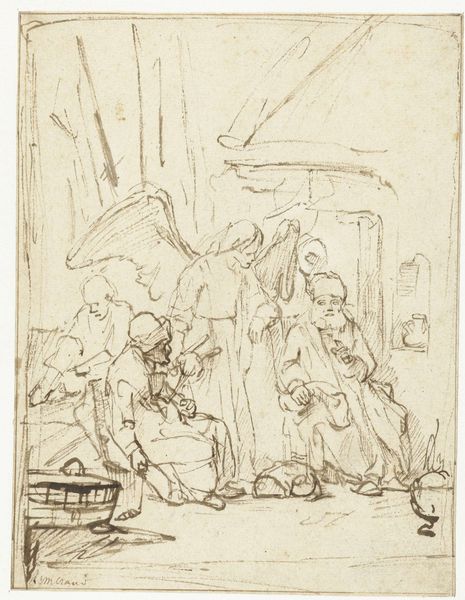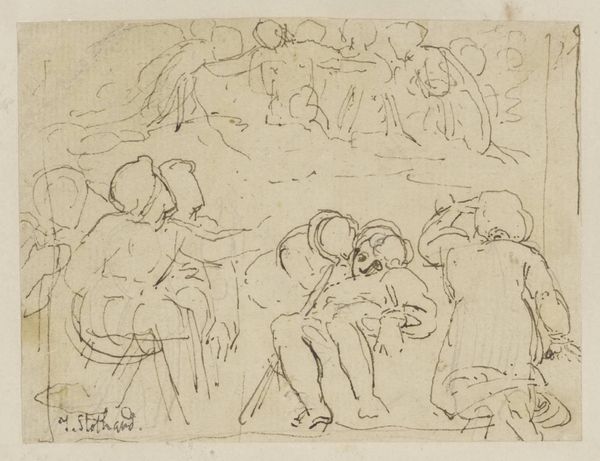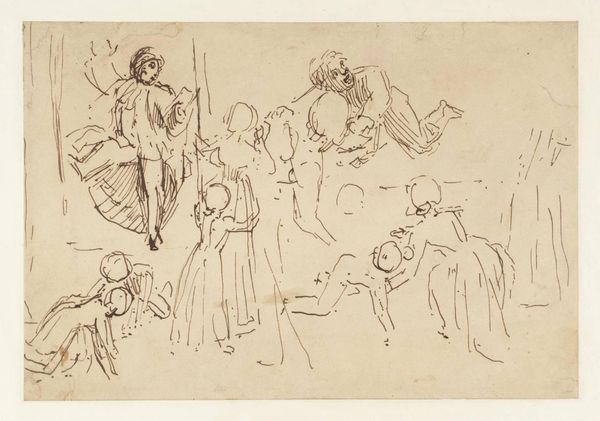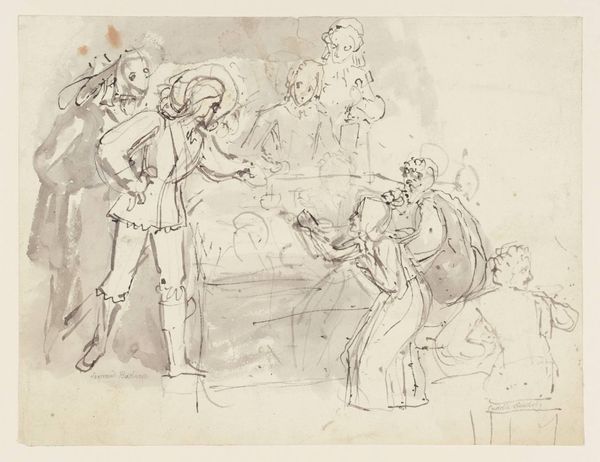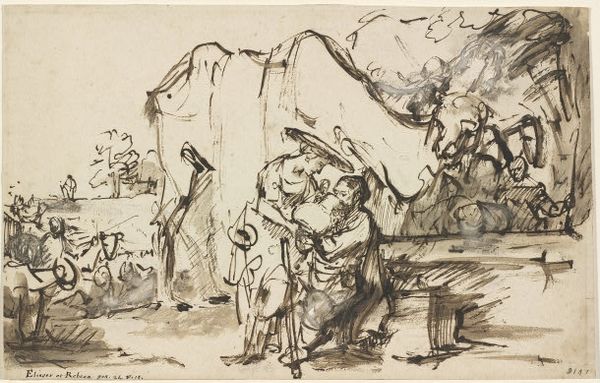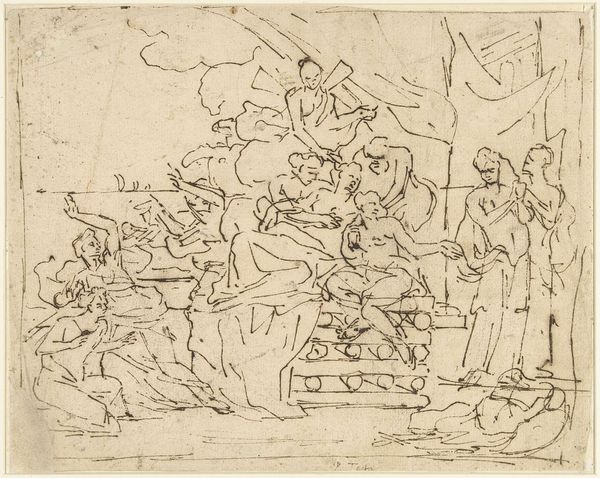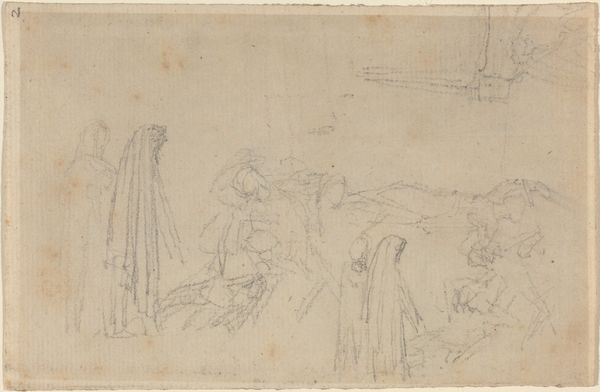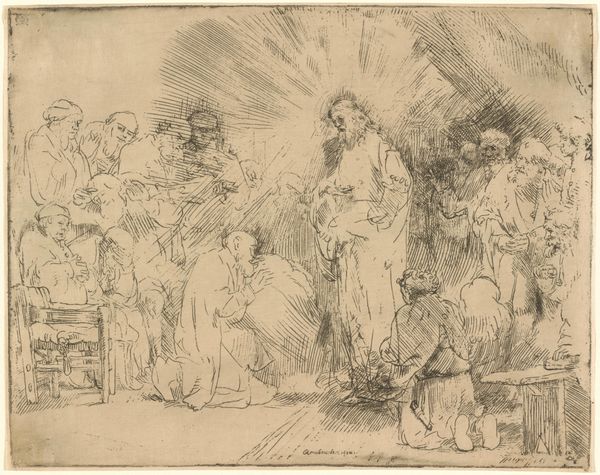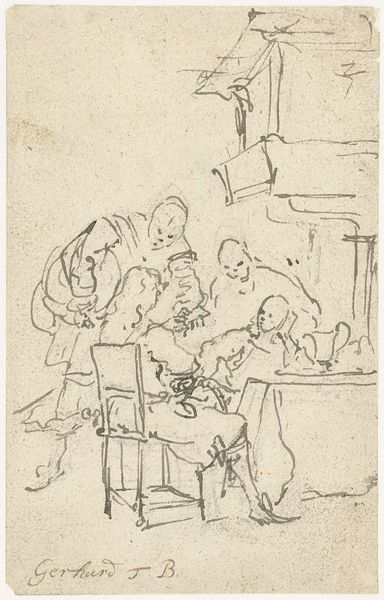
drawing, pencil
#
drawing
#
narrative-art
#
dutch-golden-age
#
landscape
#
figuration
#
pencil
#
genre-painting
Copyright: Public Domain: Artvee
Curator: Well, here we have Nicolaes Maes’s drawing "Abraham Entertaining the Angels", dating from around 1655. It's rendered in pencil, offering us a glimpse into a biblical scene through the lens of the Dutch Golden Age. Editor: Immediately, what strikes me is the intimate and rather homey feeling. It’s as if we’ve stumbled upon a family picnic… but, you know, with angels casually dropping by for tea! It has that dreamlike unfinished quality that adds so much intrigue. Curator: That's a keen observation. Maes situates this significant biblical narrative—where Abraham welcomes three strangers who turn out to be angels promising him and Sarah a son—in a surprisingly domestic setting. It raises questions about hospitality, divine intervention, and the disruption of everyday life by the extraordinary. How are those notions of interruption perceived in our societies, especially concerning gender dynamics? Editor: Exactly! And the dog sleeping at the bottom left? Is he even aware? I’m fixated on that innocent obliviousness contrasting so fiercely with what’s happening at the table. As for disrupting gender dynamics...the eye seems more drawn to Sarah, lurking by the table rather than the supposed 'patriarch' holding court. Are the angels really here to address HIM? What about her agency? Curator: That reading resonates powerfully with current feminist theory—problematizing patriarchal narratives by looking closely at figures relegated to the margins, who nonetheless possess power within the narrative and visual economy. Maes choice of drawing rather than a formal painting adds a sense of immediacy, inviting the viewer into a kind of backstage pass of biblical history, don’t you think? Editor: Absolutely, like flipping through someone's sketchbook! This rawness also suggests that revelation itself is always an unfinished, evolving thing. I think Maes' approach reflects the ambiguities of faith itself, which seems especially important during a post-colonial age. Curator: Your point adds nuance to the complex historical intersections—it encourages us to deconstruct not just the images themselves but also our culturally programmed approaches towards interpreting art. Maes provides such fertile ground for contemporary reflection, especially when thinking about whose stories are centered and whose are sidelined. Editor: I think what it all boils down to is that “Abraham Entertaining the Angels” refuses to be a simple bible story, which ends up forcing us, centuries later, to pull up a chair and actually wrestle with its implications ourselves. Curator: Yes, absolutely. It becomes a continuous engagement, which makes the drawing feel so vital, doesn't it?
Comments
No comments
Be the first to comment and join the conversation on the ultimate creative platform.
